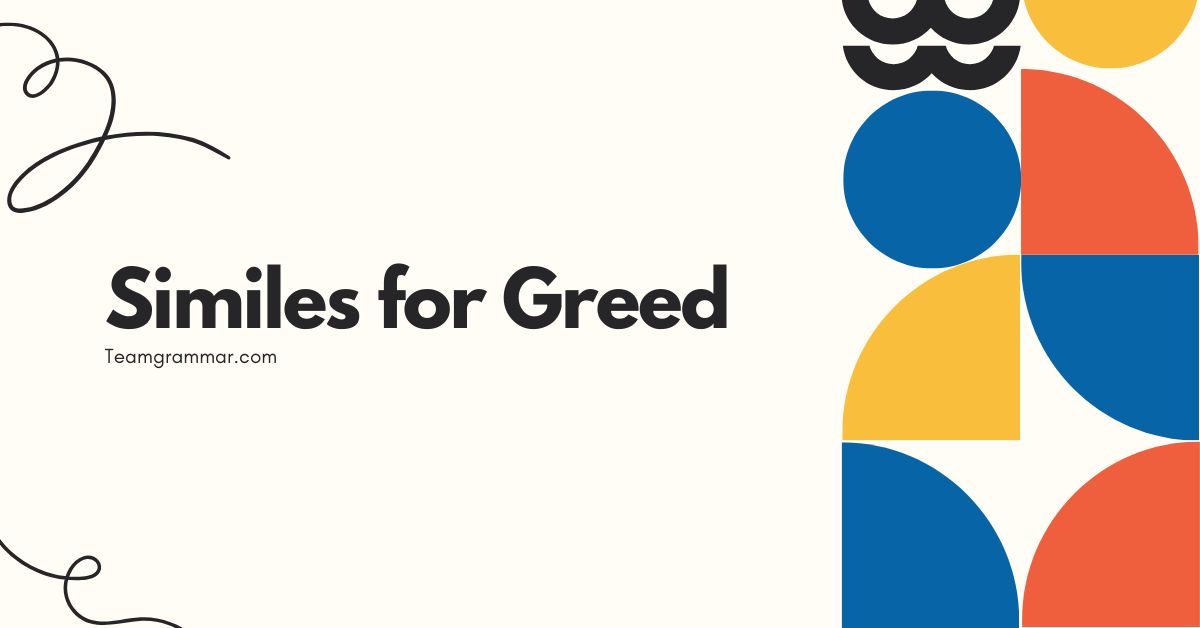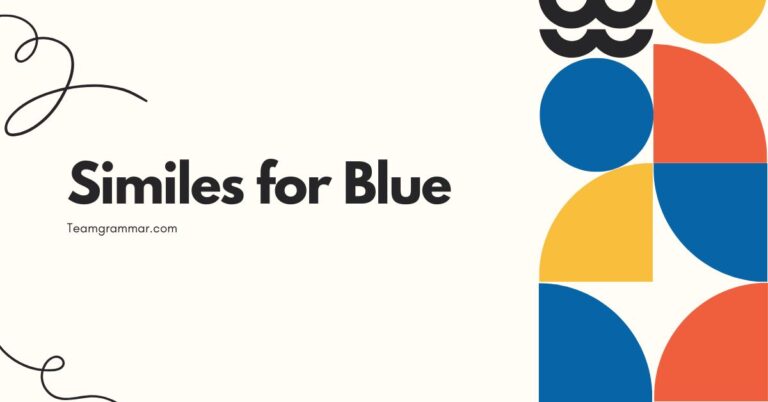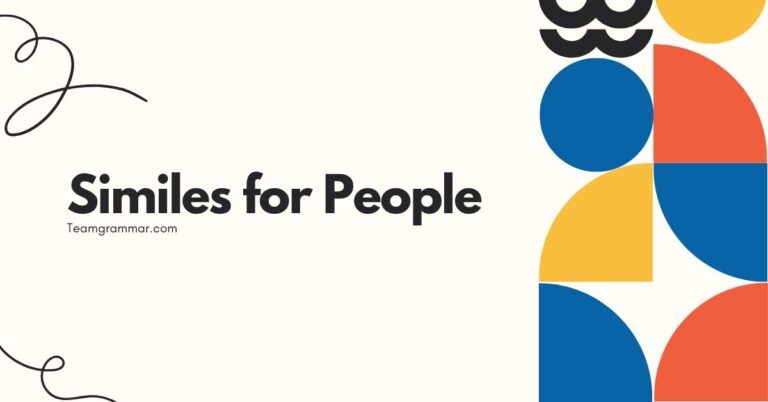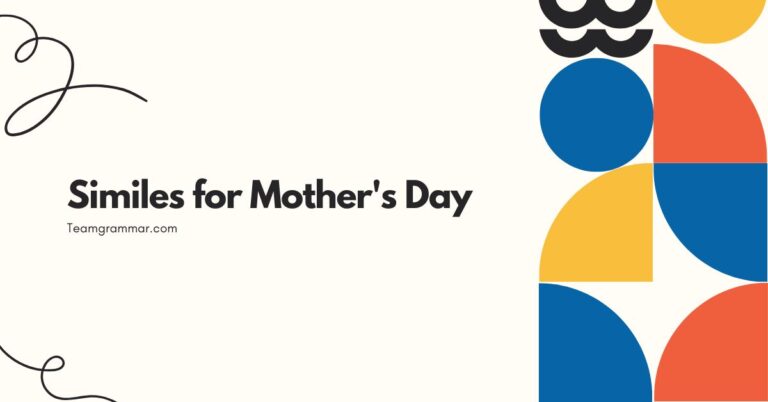39 Similes for Greed: A Grammatical Exploration
Understanding similes is crucial for enhancing your descriptive writing and comprehension skills. Similes allow you to create vivid comparisons that make your language more engaging and impactful.
This article focuses specifically on similes used to describe greed, a powerful emotion that has fueled countless stories and real-life events. Mastering these similes will enrich your vocabulary and improve your ability to articulate nuanced meanings.
This guide is perfect for students, writers, and anyone looking to deepen their understanding of English grammar and expressive language.
By exploring the structure and usage of similes related to greed, you’ll gain insights into how language shapes our perception of this complex human trait. We’ll delve into numerous examples, practice exercises, and common mistakes to ensure you can confidently use these similes in your own writing and speech.
Table of Contents
- Introduction
- Definition of Simile and Greed
- Simile Definition
- Greed Definition
- Structural Breakdown of Similes
- Key Elements of a Simile
- Common Simile Patterns
- Types and Categories of Similes for Greed
- Animalistic Similes
- Hunger-Related Similes
- Materialistic Similes
- Examples of Similes for Greed
- Animalistic Greed Examples
- Hunger-Driven Greed Examples
- Materialistic Greed Examples
- Abstract Greed Examples
- Natural World Greed Examples
- Usage Rules for Similes
- Clarity and Relevance
- Cultural Sensitivity
- Avoiding Clichés
- Common Mistakes When Using Similes
- Incorrect Comparisons
- Mixing Metaphors and Similes
- Practice Exercises
- Exercise 1: Identifying Similes
- Exercise 2: Completing Similes
- Exercise 3: Writing Similes
- Advanced Topics: Nuances in Simile Usage
- Extended Similes
- Ironic Similes
- Frequently Asked Questions (FAQ)
- Conclusion
Definition of Simile and Greed
To effectively use similes for greed, it is essential to understand both the definition of a simile and the nuances of the concept of greed.
Simile Definition
Asimileis a figure of speech that directly compares two different things using the words “like” or “as.” It aims to highlight a shared quality between these dissimilar things, creating a more vivid and relatable image or understanding. Unlike a metaphor, which implies something *is* something else, a simile states that something is *like* or *as* something else.
Similes are powerful tools for writers and speakers to add depth, clarity, and emotional resonance to their language.
For instance, saying “He is as brave as a lion” compares his bravery to the perceived bravery of a lion, making the description more impactful than simply saying “He is brave.” The comparison provides a concrete image that enhances the reader’s understanding.
Greed Definition
Greedis an intense and selfish desire for something, especially wealth, power, or food. It often involves a disproportionate or excessive pursuit of possessions or advantages, going beyond what is reasonable or necessary.
Greed is often associated with negative consequences, such as exploitation, corruption, and unhappiness. It is a complex emotion rooted in fear, insecurity, and a perceived lack of fulfillment.
It can manifest in various forms, from the accumulation of material goods to the relentless pursuit of social status.
In literature and everyday life, greed is frequently portrayed as a destructive force that drives individuals to act unethically or immorally. Understanding the multifaceted nature of greed is crucial for selecting and interpreting similes that effectively capture its essence.
Structural Breakdown of Similes
Understanding the structural elements of a simile is essential for creating effective and meaningful comparisons. Breaking down the components allows for a more deliberate and precise use of this literary device.
Key Elements of a Simile
A simile typically consists of three key elements:
- The Subject: The thing being described or compared.
- The Comparison Word: Either “like” or “as.”
- The Object of Comparison: The thing to which the subject is being compared.
For example, in the simile “His greed was like a bottomless pit,” “his greed” is the subject, “like” is the comparison word, and “a bottomless pit” is the object of comparison. The simile suggests that his greed is insatiable and impossible to satisfy.
Common Simile Patterns
While the basic structure remains consistent, similes can be expressed in various patterns to achieve different effects. Here are a few common patterns:
- Subject + is + as + Adjective + as + Object: This pattern emphasizes a specific quality shared by the subject and object. For example, “His desire for wealth was as insatiable as a black hole.”
- Subject + is + like + Object: This pattern offers a more direct comparison. For example, “Her greed is like a consuming fire.”
- Subject + Verb + like + Object + Verb-ing: This pattern describes an action or behavior. For example, “He hoarded money like a squirrel burying nuts.”
By understanding these patterns, you can construct similes that are both grammatically correct and stylistically effective.
Types and Categories of Similes for Greed
Similes for greed can be categorized based on the imagery they evoke and the aspects of greed they emphasize. By understanding these categories, you can select the most appropriate simile to convey your intended meaning.
Animalistic Similes
Animalistic similes compare a greedy person or their behavior to animals known for their acquisitiveness or predatory nature. These similes often highlight the primal and instinctual aspects of greed.
Examples include: “as greedy as a wolf,” “like a packrat hoarding useless items,” and “as ravenous as a vulture.” These comparisons evoke images of relentless pursuit and insatiable hunger.
Hunger-Related Similes
Hunger-related similes draw parallels between the physical sensation of hunger and the insatiable nature of greed. These similes emphasize the feeling of emptiness and the constant desire for more.
Examples include: “like a starving man craving food,” “as insatiable as a bottomless stomach,” and “her desire for power was like an unquenchable thirst.” These comparisons highlight the consuming and relentless nature of greed.
Materialistic Similes
Materialistic similes focus on the object of greed, often comparing it to something tangible and valuable. These similes emphasize the focus on possessions and wealth.
Examples include: “his love for money was like a miser’s gold,” “as attached to his possessions as a dragon to its hoard,” and “her desire for luxury was like an addiction to fine jewels.” These comparisons highlight the obsessive and possessive nature of greed.
Examples of Similes for Greed
The following tables provide extensive examples of similes for greed, organized by category. Each example illustrates how similes can be used to describe different aspects of greed in a vivid and impactful way.
Animalistic Greed Examples
This table showcases similes that compare greed to animalistic behaviors, emphasizing the primal and instinctive nature of excessive desire.
| Simile | Explanation |
|---|---|
| As greedy as a wolf | Compares the intensity of greed to the predatory hunger of a wolf. |
| Like a packrat hoarding useless items | Illustrates the indiscriminate accumulation of possessions, even those without value. |
| As ravenous as a vulture | Emphasizes the insatiable hunger and willingness to take whatever is available. |
| Greedy like a pig at the trough | Suggests a lack of restraint and an excessive consumption. |
| As possessive as a dog with its bone | Highlights the unwillingness to share and the fierce protection of possessions. |
| Like a spider spinning its web, he trapped wealth | Illustrates the manipulative and predatory nature of greed. |
| His avarice was as deep as a snake’s burrow | Implies hidden and profound greed. |
| As relentless as ants marching toward sugar | Portrays a focused and unstoppable pursuit of wealth. |
| His hunger for power was like a lion’s roar | Emphasizes the dominance and aggression associated with greed. |
| As cunning as a fox seeking its prey | Highlights the deceptive tactics used to acquire wealth. |
| He clung to his money like a barnacle to a ship | Showcases the tenacity and unwillingness to let go of wealth. |
| His greed spread like a swarm of locusts | Illustrates the destructive and all-consuming nature of greed. |
| As watchful as a hawk guarding its nest egg | Emphasizes the vigilance and protectiveness over one’s possessions. |
| His desire for more was like a beaver building a dam | Suggests a constant and industrious accumulation of resources. |
| As insatiable as a shark smelling blood | Portrays a relentless and instinctive pursuit of wealth. |
| His greed grew like kudzu, choking everything around it | Illustrates how greed can stifle and destroy other aspects of life. |
| Like a hyena scavenging for scraps, he sought out opportunities | Suggests a willingness to take advantage of any situation for personal gain. |
| His thirst for power was like a venomous snake’s strike | Emphasizes the danger and harm caused by unchecked ambition. |
| As territorial as a wolf guarding its pack’s hunting grounds | Highlights the possessiveness and defensiveness associated with greed. |
| He buried his money like an ostrich hiding its head in the sand | Suggests denial and a lack of awareness about the consequences of greed. |
| His appetite for wealth was like a bear waking from hibernation | Illustrates a sudden and intense resurgence of acquisitiveness. |
| As persistent as a mosquito seeking blood, he pursued his goals | Emphasizes the annoying and relentless nature of greed. |
| He guarded his secrets like a dragon protecting its hoard | Highlights the possessiveness and unwillingness to share. |
Hunger-Driven Greed Examples
This table focuses on similes that compare greed to hunger, emphasizing the insatiable and consuming nature of the desire for more.
| Simile | Explanation |
|---|---|
| Like a starving man craving food | Highlights the intense and desperate nature of greed. |
| As insatiable as a bottomless stomach | Emphasizes the unending desire for more. |
| Her desire for power was like an unquenchable thirst | Suggests a constant and never-satisfied need for control. |
| His greed was like a hollow ache that nothing could fill | Illustrates the emotional emptiness that drives greed. |
| As desperate for wealth as a castaway for water | Highlights the urgency and desperation associated with greed. |
| Like a parched desert craving rain, his soul yearned for riches | Emphasizes the deep and profound need for wealth. |
| His appetite for success was like a fire that consumed everything | Illustrates the destructive and all-consuming nature of ambition. |
| As empty as a well that never fills, his heart was devoid of contentment | Highlights the lack of satisfaction and the constant pursuit of more. |
| His need for approval was like a bottomless pit, never satisfied | Emphasizes the insatiable desire for validation. |
| As hungry for recognition as a child seeking attention | Portrays the vulnerability and neediness behind the pursuit of fame. |
| His desire for knowledge was like an unfillable void | Suggests a constant and never-ending quest for information. |
| As thirsty for power as a plant deprived of water | Highlights the essential need for control and influence. |
| His craving for luxury was like a deep-seated addiction | Emphasizes the compulsive and uncontrollable nature of greed. |
| As empty as a bank account after a shopping spree, his soul felt barren. | Illustrates the short-lived satisfaction and the subsequent emptiness. |
| His desire for revenge was like a festering wound, never healing. | Emphasizes the bitterness and long-lasting nature of resentment. |
| As hungry for validation as a comedian seeking laughter, he craved attention. | Portrays the vulnerability and neediness behind the pursuit of fame. |
| His need for control was like a gardener’s relentless pruning, always shaping and manipulating. | Emphasizes the controlling and manipulative nature of greed. |
| As thirsty for admiration as an artist seeking applause, he yearned for recognition. | Highlights the desire for validation and approval. |
| His craving for excitement was like a drug addict’s need for a fix, always chasing the next thrill. | Emphasizes the compulsive and uncontrollable nature of greed. |
| As empty as a politician’s promises, his words held no substance. | Illustrates the lack of genuine commitment and the superficiality of greed. |
Materialistic Greed Examples
This table presents similes that link greed to materialistic possessions, highlighting the focus on wealth and tangible goods.
| Simile | Explanation |
|---|---|
| His love for money was like a miser’s gold | Emphasizes the obsessive and possessive nature of greed. |
| As attached to his possessions as a dragon to its hoard | Highlights the unwillingness to share and the fierce protection of wealth. |
| Her desire for luxury was like an addiction to fine jewels | Suggests a compulsive and uncontrollable need for material comforts. |
| His wealth grew like a mountain of gold, obscuring his humanity | Illustrates how greed can overshadow and diminish other qualities. |
| As valuable to him as a priceless artifact, his money was his obsession | Highlights the extreme importance placed on wealth. |
| Like a magpie collecting shiny objects, he gathered wealth indiscriminately | Emphasizes the indiscriminate accumulation of possessions. |
| His pursuit of riches was like a gold rush, driven by blind ambition | Illustrates the frenzy and recklessness associated with greed. |
| As precious to her as a diamond tiara, her status was her driving force | Highlights the importance placed on social standing and recognition. |
| His house was like a museum of treasures, each item a testament to his greed | Emphasizes the ostentatious display of wealth. |
| As obsessed with his car collection as a child with toys, he never grew up | Portrays the immaturity and superficiality of materialistic greed. |
| His investment portfolio was like a tangled web, ensnaring him in its complexity | Illustrates the complicated and often unethical nature of wealth accumulation. |
| As protective of his property as a fortress, he guarded his wealth fiercely | Highlights the defensiveness and possessiveness associated with greed. |
| His desire for bigger and better things was like an endless shopping list | Emphasizes the insatiable need for more possessions. |
| As proud of his accomplishments as a peacock displaying its feathers, he craved admiration | Highlights the vanity and desire for recognition. |
| His ambition to climb the corporate ladder was like an obsession with a game of chess, always strategizing. | Emphasizes the strategic and calculated nature of greed. |
| As envious of others’ success as a child wanting a new toy, he always felt incomplete. | Portrays the feelings of inadequacy and jealousy that drive greed. |
| His pursuit of fame was like a mirage in the desert, always out of reach. | Illustrates the elusive and ultimately unsatisfying nature of fame. |
| As obsessed with his appearance as a celebrity on the red carpet, he craved attention. | Highlights the superficiality and vanity associated with greed. |
| His desire for power was like a dictator’s grip, controlling every aspect of his life. | Emphasizes the controlling and manipulative nature of greed. |
| As consumed by his work as a bee collecting nectar, he had no time for anything else. | Portrays the all-consuming nature of ambition and greed. |
Abstract Greed Examples
This table focuses on abstract similes that link greed to intangible concepts, highlighting the deeper psychological and emotional aspects of excessive desire.
| Simile | Explanation |
|---|---|
| His greed was like a dark cloud, obscuring his judgment | Illustrates how greed can cloud one’s perception and decision-making. |
| Her ambition was like a runaway train, unstoppable and destructive | Emphasizes the uncontrolled and harmful nature of unchecked ambition. |
| His desire for control was like a tight fist, crushing everything within its grasp | Highlights the oppressive and suffocating nature of greed. |
| Greed spread like a disease, infecting everyone around him | Illustrates the contagious and harmful effects of greed. |
| His avarice was as deep as a well, never filling with satisfaction | Implies hidden and profound greed. |
| Like a shadow lurking behind him, greed followed his every step | Emphasizes the constant presence and influence of greed. |
| His hunger for power was like a raging fire, destroying everything in its path | Illustrates the destructive and all-consuming nature of ambition. |
| As blinding as the sun, his desire for success obscured his morals | Highlights how greed can compromise one’s ethical principles. |
| His ambition was like a double-edged sword, bringing both success and ruin | Emphasizes the potential consequences of unchecked ambition. |
| As subtle as a whisper, greed tempted him with promises of more | Highlights the insidious and persuasive nature of greed. |
| His need for validation was like a bottomless pit, never satisfied | Emphasizes the insatiable desire for approval. |
| As addictive as a drug, his pursuit of wealth consumed his life | Highlights the compulsive and uncontrollable nature of greed. |
Natural World Greed Examples
This table explores similes that draw comparisons between greed and elements of the natural world, emphasizing the relentless and sometimes destructive aspects of excessive desire.
| Simile | Explanation |
|---|---|
| His greed grew like a weed, choking out all the good in his life. | Illustrates how greed can stifle positive aspects and relationships. |
| As relentless as a hurricane, his ambition swept away everything in its path. | Emphasizes the destructive force of unchecked ambition. |
| His desire for more was like a desert consuming an oasis, never satisfied. | Highlights the insatiable and barren nature of greed. |
| Greed spread like wildfire, consuming everything in its path. | Emphasizes the rapid and devastating impact of widespread greed. |
| His ambition climbed like ivy, clinging tightly and suffocating the host. | Portrays how ambition can be parasitic and harmful to others. |
| As deep as the ocean, his greed seemed boundless and unexplored. | Illustrates the vast and fathomless nature of greed. |
| His craving for power was like a volcano, dormant but ready to erupt. | Emphasizes the suppressed and potentially explosive nature of greed. |
| As persistent as a river eroding stone, his ambition slowly wore down his morals. | Highlights the gradual and corrosive effect of greed on ethics. |
| His wealth was like a mountain, towering over others and casting a long shadow. | Emphasizes the isolating and dominating effect of excessive wealth. |
| As unpredictable as the weather, his greed could strike at any moment. | Illustrates the erratic and opportunistic nature of greed. |
Usage Rules for Similes
To use similes effectively, it’s important to follow certain rules that ensure clarity, relevance, and impact.
Clarity and Relevance
Ensure that the comparison is clear and easily understood by your audience. The object of comparison should share a recognizable quality with the subject.
Avoid obscure or overly complex comparisons that may confuse the reader. The relevance of the comparison is also important.
The shared quality should meaningfully contribute to the understanding or description of the subject.
For example, “His greed was like a black hole” is a clear and relevant simile because black holes are known for their insatiable gravitational pull, which mirrors the insatiable nature of greed. However, “His greed was like a stapler” would be confusing and irrelevant because there is no obvious shared quality between greed and a stapler.
Cultural Sensitivity
Be mindful of cultural sensitivities when using similes. Comparisons that may be acceptable in one culture may be offensive or inappropriate in another.
Consider the potential impact of your language on your audience and avoid stereotypes or generalizations.
For example, using animalistic similes to describe people can be particularly sensitive, as certain animals may be associated with negative stereotypes in specific cultures. It’s essential to be aware of these connotations and choose your comparisons carefully.
Avoiding Clichés
While similes can be powerful tools, avoid using clichés or overused comparisons. Clichéd similes, such as “as greedy as a pig,” have lost their impact and can make your writing sound unoriginal.
Strive to create fresh and imaginative comparisons that will capture your audience’s attention.
Instead of relying on clichés, try to think of unique and unexpected comparisons that will surprise and engage your readers. For example, instead of saying “as greedy as a pig,” you could say “His greed was like a vacuum cleaner, sucking up every last penny.”
Common Mistakes When Using Similes
Even experienced writers can make mistakes when using similes. Understanding these common errors can help you avoid them and improve the quality of your writing.
Incorrect Comparisons
One common mistake is making comparisons that are illogical or nonsensical. The subject and object of comparison should share a clear and recognizable quality.
Avoid comparisons that are based on superficial similarities or that don’t make sense in the context of the sentence.
Incorrect: “His greed was like a bicycle.” (There is no clear shared quality between greed and a bicycle.)
Correct: “His greed was like a bottomless pit.” (Both greed and a bottomless pit are insatiable.)
Mixing Metaphors and Similes
Another common mistake is mixing metaphors and similes within the same sentence or passage. Maintain consistency in your figurative language to avoid confusing your audience.
Incorrect: “His greed was a consuming fire, like a bottomless pit.” (This sentence mixes a metaphor – “a consuming fire” – with a simile – “like a bottomless pit.”)
Correct: “His greed was like a consuming fire.” (This sentence uses only a simile.)
Practice Exercises
Test your understanding of similes for greed with these practice exercises. Each exercise focuses on a different aspect of simile usage.
Exercise 1: Identifying Similes
Identify the similes in the following sentences.
| Question | Answer |
|---|---|
| 1. His greed was as deep as the ocean. | His greed was as deep as the ocean. |
| 2. She hoarded money like a squirrel. | She hoarded money like a squirrel. |
| 3. The man was very greedy. | No simile |
| 4. His desire for power was like an unquenchable thirst. | His desire for power was like an unquenchable thirst. |
| 5. His greed is a consuming inferno. | No simile (Metaphor) |
| 6. As ravenous as a vulture, he seized every opportunity. | As ravenous as a vulture, he seized every opportunity. |
| 7. His love for money was like a miser’s gold. | His love for money was like a miser’s gold. |
| 8. He was greedy and selfish. | No simile |
| 9. His ambition was as sharp as a knife. | His ambition was as sharp as a knife. |
| 10. She wanted more and more. | No simile |
Exercise 2: Completing Similes
Complete the following similes with an appropriate ending.
| Question | Answer |
|---|---|
| 1. His greed was like a ____________________. | His greed was like a bottomless pit. |
| 2. She wanted money as much as a ____________________. | She wanted money as much as a starving person wants food. |
| 3. He hoarded wealth like a ____________________. | He hoarded wealth like a dragon guarding its hoard. |
| 4. Their desire for power was like ____________________. | Their desire for power was like an addiction. |
| 5. His need for control was as strong as ____________________. | His need for control was as strong as a dictator’s grip. |
| 6. Her ambition soared like ____________________. | Her ambition soared like a rocket into space. |
| 7. His insatiable hunger for success was like ____________________. | His insatiable hunger for success was like a consuming fire. |
| 8. He clung to his riches like ____________________. | He clung to his riches like a drowning man to a life raft. |
| 9. Their pursuit of wealth was as relentless as ____________________. | Their pursuit of wealth was as relentless as a river carving through stone. |
| 10. Her longing for luxury was like ____________________. | Her longing for luxury was like a siren’s call. |
Exercise 3: Writing Similes
Write your own similes to describe greed using the following prompts.
| Prompt | Example Answer |
|---|---|
| 1. Describe a greedy person’s eyes. | His eyes were like lasers, scanning for opportunities to profit. |
| 2. Describe the sound of a greedy person counting money. | The sound of him counting money was like a hypnotic melody, a siren song of avarice. |
| 3. Describe the feeling of wanting more and more. | The feeling of wanting more and more was like a bottomless pit, never filling with satisfaction. |
| 4. Describe a greedy person’s smile. | His smile was as thin and sharp as a razor, reflecting a cold and calculating nature. |
| 5. Describe how greed can affect a person’s soul. | Greed can affect a person’s soul like a creeping darkness, slowly consuming their humanity. |
| 6. Describe a greedy person’s touch. | His touch was like ice, cold and calculating, leaving a chilling emptiness behind. |
| 7. Describe the way greed distorts reality. | Greed distorts reality like a funhouse mirror, exaggerating the importance of wealth and power. |
| 8. Describe the way greed isolates a person. | Greed isolates a person like a fortress, keeping them locked away from genuine connection and empathy. |
| 9. Describe how greed can consume one’s thoughts. | Greed can consume one’s thoughts like a persistent hum, drowning out all other concerns. |
| 10. Describe the emptiness that greed leaves behind. | The emptiness that greed leaves behind is like a barren desert, devoid of life and fulfillment. |
Advanced Topics: Nuances in Simile Usage
For advanced learners, understanding the nuances of simile usage can further enhance their writing skills.
Extended Similes
An extended simile is a simile that is developed over several sentences or even paragraphs. It allows for a more detailed and nuanced comparison, creating a richer and more impactful image in the reader’s mind.
By elaborating on the shared qualities between the subject and object of comparison, you can create a more vivid and memorable description.
For example, instead of simply saying “His greed was like a consuming fire,” you could write: “His greed was like a consuming fire, starting as a small ember of desire and quickly growing into an inferno that devoured everything in its path. It consumed his thoughts, his relationships, and his very soul, leaving behind only ashes of what he once was.”
Ironic Similes
An ironic simile is a simile that is used to convey the opposite of its literal meaning. It can be used to create humor, satire, or to highlight a contradiction.
The effectiveness of an ironic simile depends on the audience’s ability to recognize the intended irony.
For example, saying “He was as generous as a miser” is an ironic simile because misers are known for their stinginess, not their generosity. The simile highlights the person’s lack of generosity in a humorous
and sarcastic way.
Frequently Asked Questions (FAQ)
Here are some frequently asked questions about using similes for greed.
Q: How do similes differ from metaphors?
A: Similes use “like” or “as” to make a direct comparison, whereas metaphors imply that one thing *is* another without using those words.
Q: Can a simile be too obvious?
A: Yes, overused or clichéd similes can make your writing sound unoriginal. Strive for fresh and imaginative comparisons.
Q: How can I make my similes more creative?
A: Think outside the box and consider unexpected or unusual comparisons. Focus on specific qualities that you want to highlight.
Q: Is it okay to use multiple similes in one paragraph?
A: Yes, but use them sparingly. Too many similes can clutter your writing and distract the reader.
Q: How do I choose the best simile for a particular situation?
A: Consider the context, the specific aspect of greed you want to emphasize, and your audience’s understanding. Clarity and relevance are key.
Q: What should I do if I can’t think of a good simile?
A: Brainstorm different qualities or images associated with greed. Look for connections to other objects, concepts, or experiences.
Q: Are there any resources to help me improve my simile writing skills?
A: Yes, online dictionaries, thesauruses, and writing guides can provide inspiration and examples. Practice and feedback are also essential.
Q: Should I always avoid clichés when using similes?
A: Generally, yes. However, in some cases, a cliché can be used ironically or humorously for a specific effect.
Q: How can I practice using similes more effectively?
A: Try writing exercises that focus on simile creation. Analyze examples of similes in literature and pay attention to how they are used.
Conclusion
Similes are powerful tools for describing greed in vivid and impactful ways. By understanding the structure, types, and usage rules of similes, you can enhance your writing and communication skills.
Remember to focus on clarity, relevance, and originality to create comparisons that resonate with your audience. Avoid common mistakes, such as incorrect comparisons and mixing metaphors, and practice regularly to improve your proficiency.
With careful attention and creative thinking, you can master the art of using similes to convey the complexities of greed and other abstract concepts.







